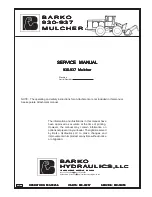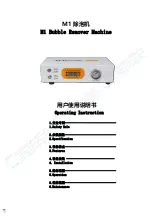
The results of this step are used as a correction in the following procedures:
•
Verifying 50 Ω Bandwidth
3.
Verification—Verify the existing operation of the device. This step confirms whether the
device is operating within the published specification prior to adjustment.
4.
Adjustment—Perform an external adjustment of the calibration constants of the device.
The adjustment procedure automatically stores the calibration date and temperature in the
nonvolatile memory to allow traceability.
5.
Re-verification—Repeat the Verification procedure to ensure that the device is operating
within the published specifications after adjustment.
Test System Characterization
The following procedures characterize the test equipment used during verification.
Notice
The connectors on the device under test (DUT) and test equipment are
fragile. Perform the steps in these procedures with great care to prevent damaging
any DUTs or test equipment.
Zeroing the Power Sensor
1.
Ensure that the power sensor is not connected to any signals.
2.
Zero the power sensor using the built-in function, according to the power sensor
documentation.
Characterizing Power Splitter Amplitude Balance and
Loss
This procedure characterizes the amplitude balance of the two output ports of the power
splitter and amplitude loss through the power splitter over a range of frequencies.
The results of the characterization are later used as a correction in the following procedures:
•
Verifying 50 Ω Bandwidth
Table 2. Power Splitter Characterization
Config
Test Point: Frequency (MHz)
1
0.05
2
325.1
3
475.1
1.
Connect the BNC (f)-to-N (f) adapter to the power sensor. Refer to this assembly as the
power sensor
.
2.
Zero the power sensor as described in the
3.
Connect the RF OUT connector of the signal generator to the input port of the power
splitter using an SMA (f)-to-N (m) adapter and an SMA (m)-to-SMA (m) cable.
6
|
ni.com
|
PXIe-5113 Calibration Procedure







































